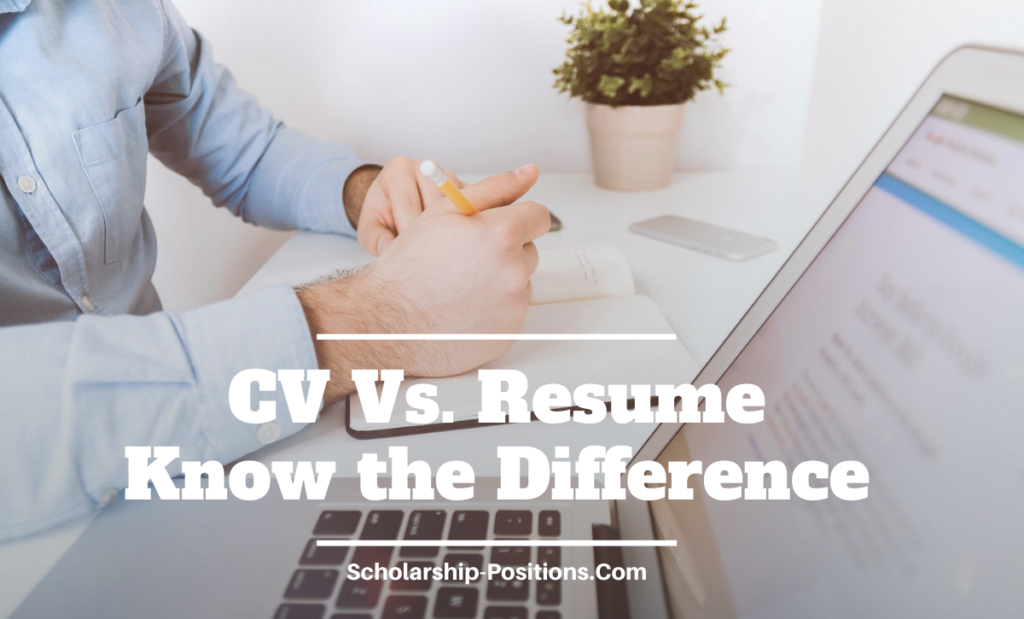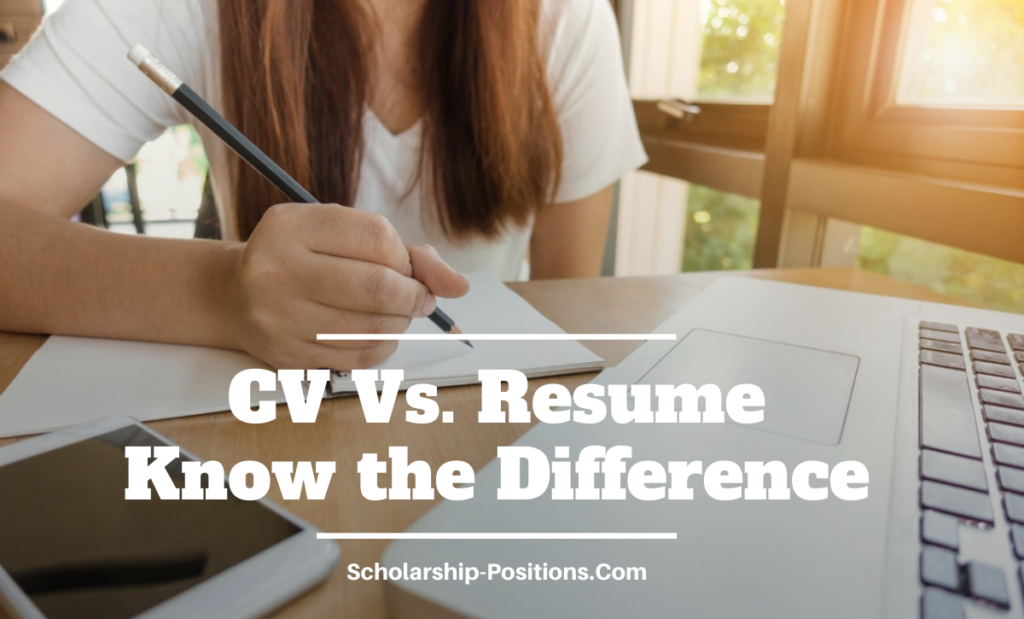When you are ready to step into the professional world, you need to compile all the necessary information about yourself in the form of a document. This document allows recruiters to understand if you are eligible for a job position.
There are two ways of creating the document, with one being a CV and the other a resume. You may have come across job postings where some employers ask for a CV while others ask for a resume and few of them accept both.
If such posts made you question how a CV is different from a resume, then you are in the right place. While both the documents are used for job applications, there are some key differences between them. Learning these differences will enable you to prepare an appropriate document for your job application.
What is a CV?
The CV stands for Curriculum Vitae, a Latin phrase that means “course of life”. A CV is a comprehensive document that enlists every little detail of your accomplishments rather than presenting a simple career overview. A CV includes details of your education and professional career along with any other achievements like special honours, awards, and publications.
A CV, typically written in chronological order is usually two or three pages long but can be extended to more pages if required. CVs remain constant and do not change for different job positions. When applying for jobs using CV, your cover letters should be written differently according to each position.
What is a Resume?
Resume comes from the French term résumé that means “to sum up”. Resumes are concise documents that summarise your educational background, skills and talents, and career history. The objective of a resume is to share a brief outline of your professional history with employers.
A good resume is no more than two pages long as the intended recruiters will not spend the document for very long.
A resume, unlike a CV, is not static. It is targeted at a specific audience and needs to be adapted to every job that you apply for. While resumes do not have to follow a chronological order, many applicants often list their work history in reverse-chronological order with the most recent job at the beginning.
A resume usually includes sections like contact information, a summary or an objective, education, work experience, skills etc.
Usage Per Region
The usage of the documents varies from country to country.
If you are in Canada or the US, you will find resume as the preferred document for job application across disciplines. In these countries, a CV is used for only two scenarios: applying for jobs abroad or applying for jobs in the academic or research-centric positions.
In mainland Europe, including the UK and Ireland, as well as New Zealand there is no such thing as a resume. In these countries, the term CV is equivalent to the content of a resume with a concise, targeted document used for job applications.
In India, South Africa, and Australia, CV and resume mean the same thing. The term CV is used mostly for a public service job application while a resume is common when applying for private companies.
What are the Differences?
At first glance, CV and resume might look similar to you. However, there are intrinsic details that make them different from each other.
Format
CV
- CVs contain exhaustive details of each aspect of your achievement including education, skillsets, and career history
- CVs are much longer and can go beyond two to three pages
Resume
- Resumes are short descriptions of your professional history
- Resumes highlight your work experiences and skills and mention specifics only when needed
- The purpose of a resume is to help understand the recruiter whether you are eligible for the role
- Resumes typically do not exceed more than two pages
Content
CV
- A CV is about your whole educational and professional career
- The information provided in the CV includes your educational qualifications with details of your academic achievements, research projects, publications, and similar fields
- CV also documents every award you achieved throughout your career
Resume
- A resume is a highlighter of your skills
- Resumes are highly customisable documents that can be tailored according to different job positions
- Resumes allow you to display your best skills to attract the attention of a recruiter
- Resumes provide the recruiters and employers with precise content that are required for the job position making it easier for them to assess the applicant
Order of Events
CV
- A CV follows a chronological order where your achievements are listed according to the time they took place
- A CV allows an employer to follow your professional growth curve
Resume
- A resume can be designed in three ways: chronologically, functionally, and combined order
Choosing CV and Resume According to Usage
A CV provides an in-depth understanding of your current position in your career. This makes it the best candidate for using in the academic sphere. The exhaustive list of your educational qualification, skills, publications, awards, and work history allows academic institutes to evaluate you better.
Resumes, on the other hand, are best suited for the private sector companies, especially when you are applying for positions in IT or technology industries. These sectors receive numerous applications throughout the year making it impossible for a recruiter to go through the detailed CV of each applicant. Resumes being crisp, to the point documents tailored for specific jobs are a popular choice for recruiters and employers.
The points mentioned in this post are all you need to know about what a CV and a resume are and how they can be used. If you are still unsure of which one to go with, you can always reach out to the recruiter for more information. In case that is not possible, sticking to resume is a safer option since it is a concise document highlighting your skills.



Very Usefull Information. Thanks to Share Knowledge ??
May i have a sample of a resume and cv